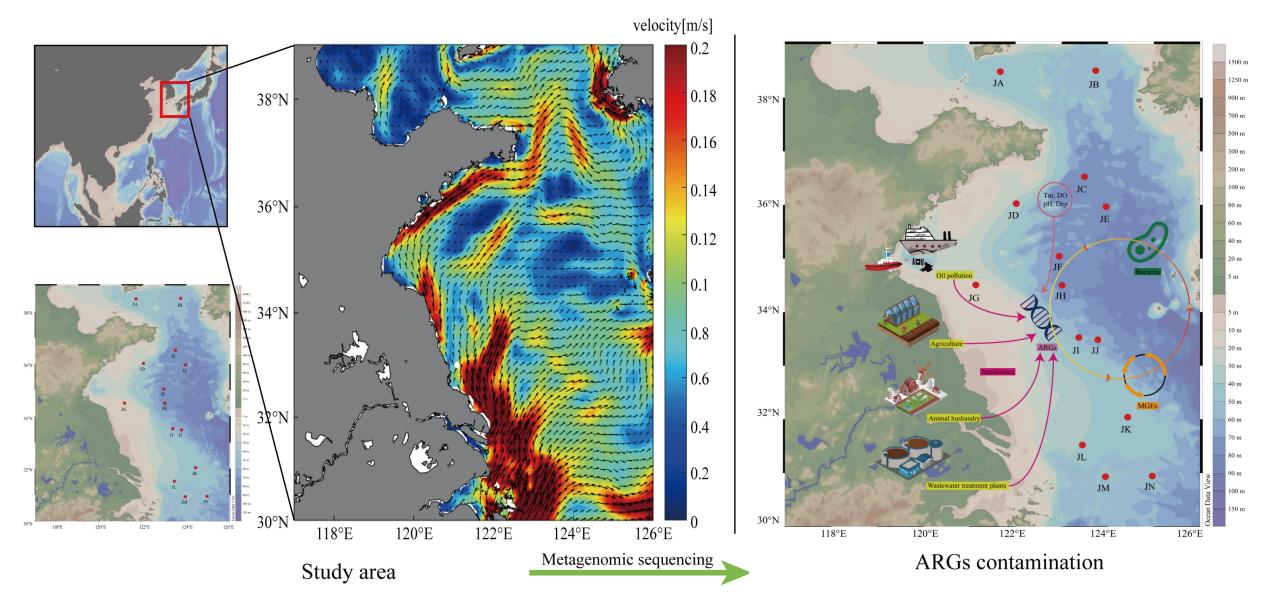
The proliferation of antibiotic resistance genes (ARGs) in marine environments, driven by widespread antibiotic overuse, poses a growing threat to global health. Coastal waters—acting as convergence zones for terrestrial pollutants—serve as critical reservoirs and potential transmission pathways for ARGs through aquatic food webs.
Conventional ARG detection methods, such as qPCR and high-throughput qPCR, remain constrained by their reliance on predefined primers and known gene targets, limiting their ability to resolve the full diversity and origins of resistance determinants.
To overcome these limitations, a research team led by Associate Prof. SHAO Zhanru from the Institute of Oceanology of the Chinese Academy of Sciences (IOCAS), employed metagenomic sequencing to conduct a comprehensive assessment of ARGs in the Yellow Sea and Yangtze River Delta. Their findings were published in Environmental Pollution.
The researchers noted that understanding the diversity, spatial distribution, and primary sources of ARGs—alongside their host organisms—is essential for developing evidence-based strategies to mitigate antibiotic resistance in coastal ecosystems.
Using metagenomics, the researchers not only identified ARGs and their microbial hosts but also investigated horizontal gene transfer (HGT) mechanisms facilitated by mobile genetic elements (MGEs). Key mediators of HGT included transposons and the insertion_element_IS91, highlighting their pivotal role in ARG dissemination.
Analysis of bacterial community structure and ARG profiles traced potential contamination sources to agricultural runoff, livestock operations, and wastewater discharge. While environmental factors such as temperature, dissolved oxygen, pH, and water depth influenced ARG distribution, bacterial community composition emerged as the dominant driver of ARG variation, surpassing the effects of MGEs or abiotic conditions.
Moreover, the researchers compared their data with the global Tara Oceans metagenomic datasets. Although dominant ARG types and bacterial genera aligned with worldwide trends, regional disparities were evident at the subtype level, underscoring localized selection pressures.
This study advances the understanding of ARG dynamics in coastal ecosystems and provides a scientific foundation for monitoring and managing antibiotic resistance risks in marine environments.

Sampling stations and potential pollution sources of ARGs. (Image by IOCAS)

86-10-68597521 (day)
86-10-68597289 (night)

52 Sanlihe Rd., Xicheng District,
Beijing, China (100864)

